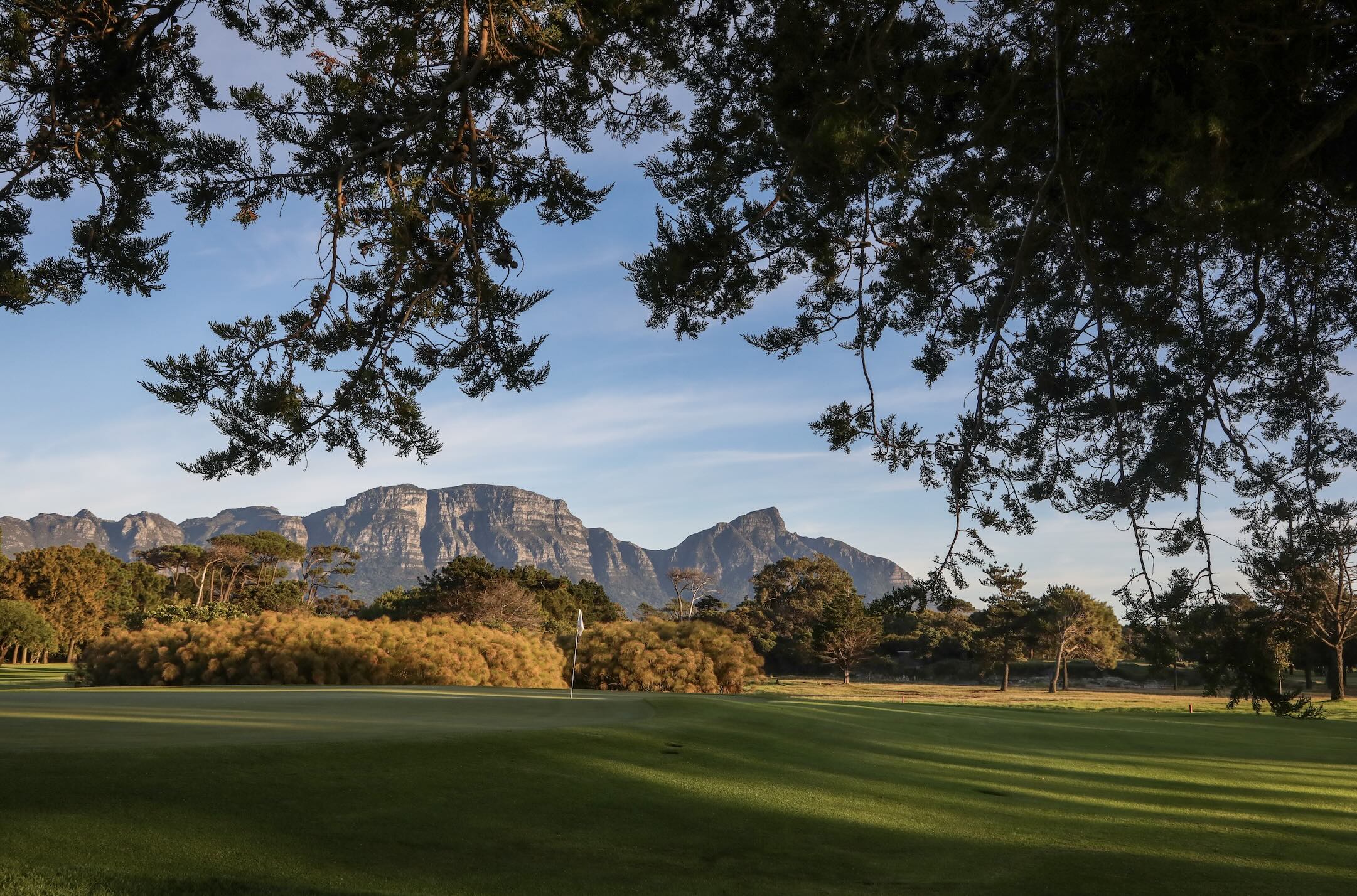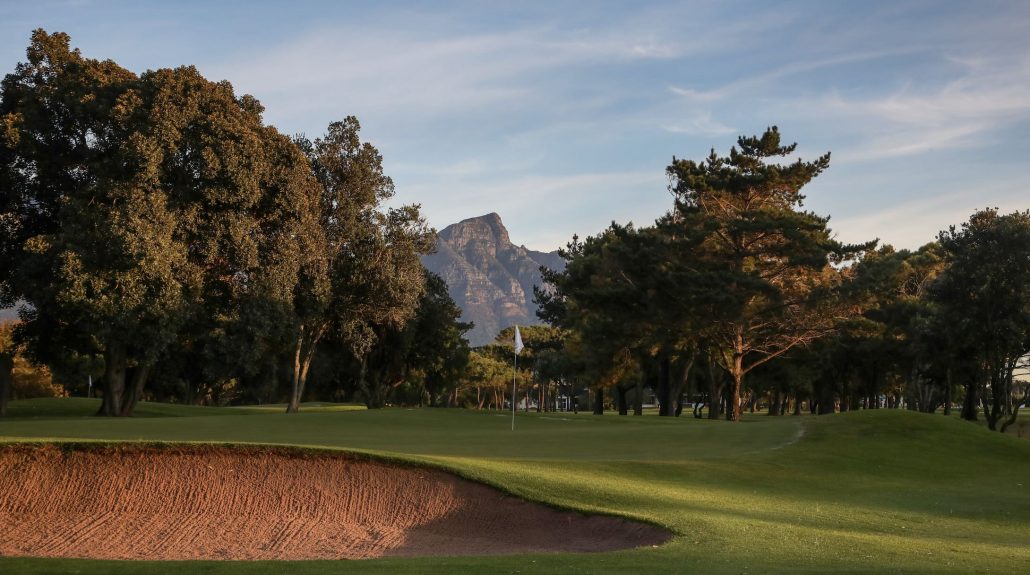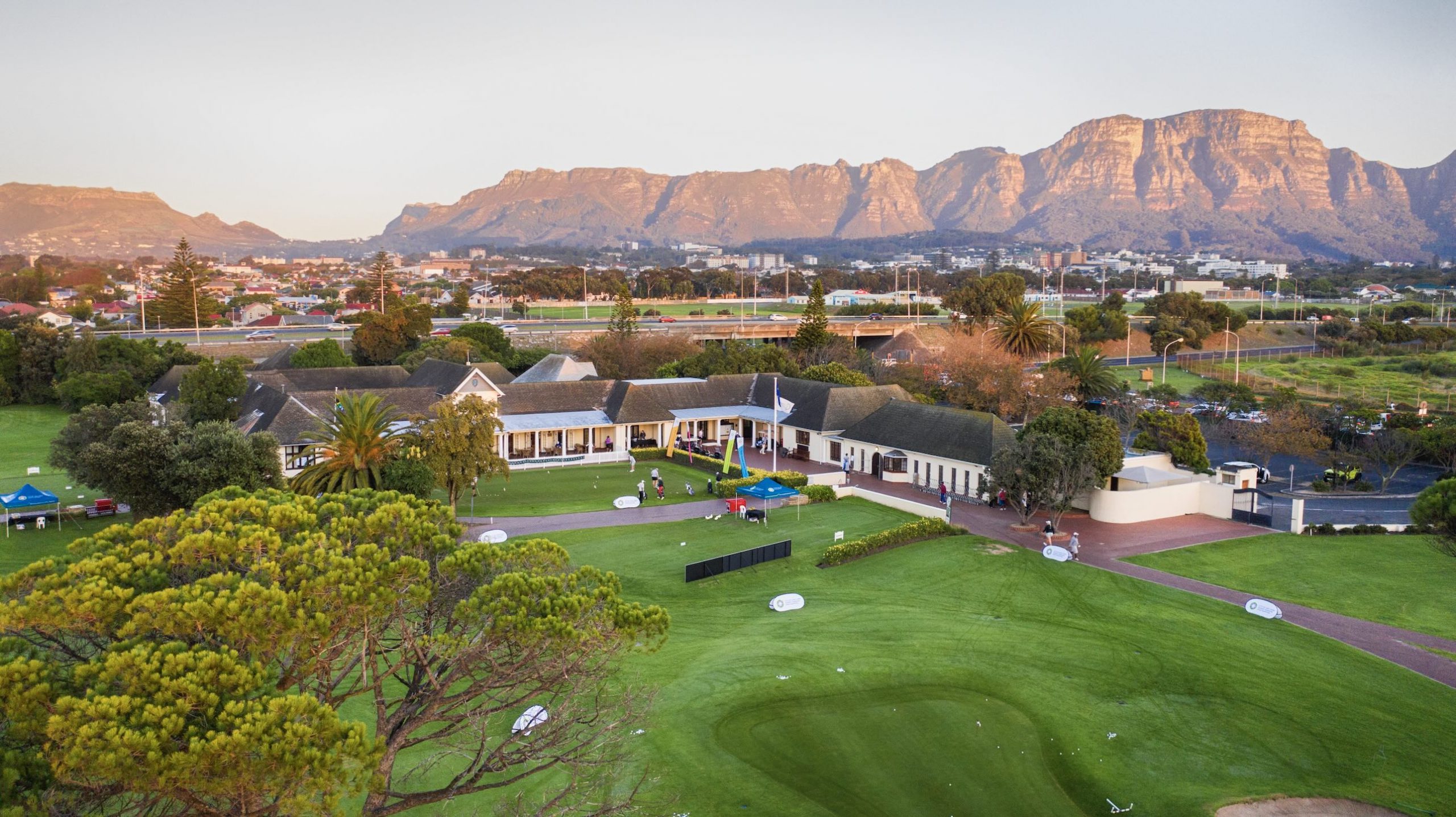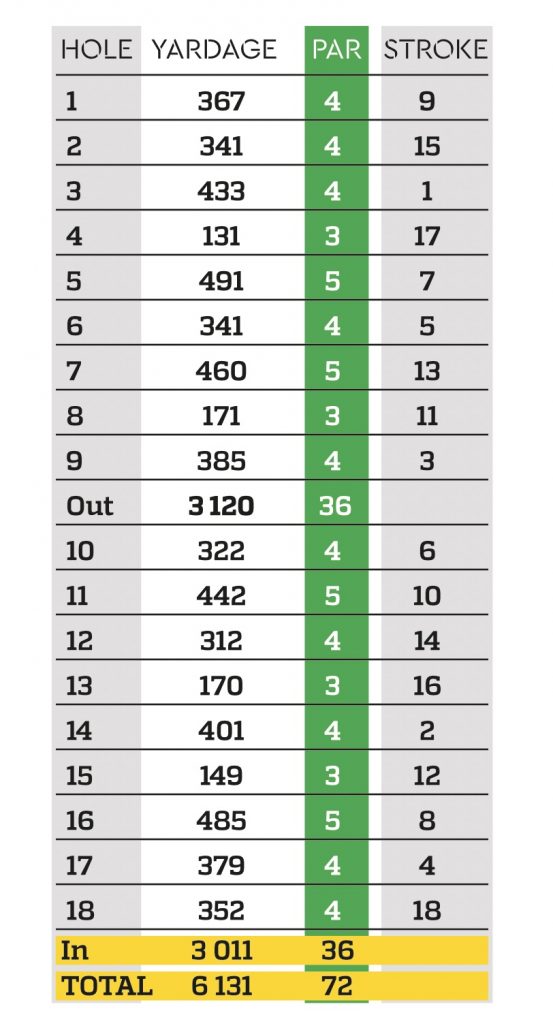There are four golf clubs in South Africa which carry the word ‘royal’, but this one, in Cape Town’s Southern Suburbs, is the oldest of them all, writes MIKE GREEN.
As one of just four courses in South Africa which basks in the ‘royal’ designation conferred by King George V, Royal Cape Golf Club also has the distinction of being the oldest golf club in Africa.
There is a wealth of memorabilia preserved in the clubhouse, built in 1923, with the foundation stone laid by Prince Arthur of Connaught, then Governor General of South Africa, and since modernised with its original charm. That alone makes a visit to the club worthwhile for the golfing aficionado.
Of course, with a bag of clubs in tow, this is no good walk spoiled: Royal Cape Golf Club enjoys tremendous views of Devils Peak and the long tail of the Table Mountain Range.
Although the course is surrounded by the encroachment of the city, it is still very much a layout built on the sandy base of the Cape Flats, just as it was when it was surrounded by smallholdings rather than modernity. The tree-lined perimeter and adjacent railway line and roads ensure that any housing is not much in evidence, and a natural environment is preserved throughout most of the course.
You won’t find much by the way of climbs or descents, but it presents intriguing challenges for every level of golfer. The layout is sprinkled with many water hazards, plenty of strategic bunkering and fairly tight, tree-lined fairways.
And being out on the flatlands of the Cape Peninsula, the course is naturally exposed to the prevailing winds of the area, both the south-easter, or ‘Cape Doctor’, and the wetter north-wester.
The mature trees may provide some protection from the winds on a bad day, but even on a still morning the course will test a full range of skills, and present situations which require some imagination instead of simply power or accuracy.
At over 6,100m from the tips, and with the wind blowing (as is often the case), this venerable old course has tested the best over its long and distinguished past. And while there might be courses with better views in the Cape Town area, there is a maturity and degree of difficulty at Royal Cape that marks it out from many of the more contemporary courses in the area.
Royal Cape dates back to 1885: Lieutenant-General Sir Henry D’Oyley Torrens arrived to act as British governor in the ‘the fairest Cape we saw in the whole circumference of the Earth’, as Sir Francis Drake said in 1580. Within days, General Torrens convened a scattering of citizens to establish the Cape Golf Club. Waterloo Green at the Wynberg Military Camp was Royal Cape’s first real home, where a rather basic course was established. That nine-hole layout presented the first monthly medal contest in 1886. A photograph of this historic occasion, showing General Torrens driving off, has survived and hangs in the clubhouse. The general went on to win with a gross score of 94.
As increasing numbers of civilians took up the game, it was decided to leave the Wynberg course to the military in 1891, and the club moved to its second home on Rondebosch Common. However, the common was open to the public for recreation, and so a third move was made in 1905 to the site currently occupied today.
It was the first Cape Town course to host the South African Amateur and Open championships in 1910. The amateur title was taken by EL Steyn, and the open title was won by Scotland’s George Fotheringham. It was also the year in which royal status was conferred. Prince Arthur, Duke of Connaught and a son of Queen Victoria, was attending the opening of the first Union parliament in Cape Town, and Cape Town Golf Club became Royal Cape in honour of that visit. It was the 36th club in the world to receive the royal designation, and the fifth outside the British Isles, after Montreal (1884), Malta (1888), Melbourne (1895) and Sydney (1897). The others in South Africa to be thus honoured are Royal Port Alfred (1924), Royal Johannesburg (1931) and Royal Durban (1932).
In 1929, Dr Charles Murray, a club member, and the man who learnt how to grow healthy turf, designed the course on which today’s layout is largely based. He was the designer of some of South Africa’s earliest golf courses, including George, and the author of the first book on South African golf.
Many improvements have been made over the years, and it was enhanced by Robert Grimsdell. The latest updates came in 2000, courtesy of Golfscape – keeping up with the times is also important to such a prestigious club, and this it has successfully done.
Royal Cape had a club professional as early as 1893, and Walter Day’s responsibilities included the upkeep of the course on Rondebosch Common. Now, teaching professional Wayne Bradley is the club professional, and he is assisted by Kurt Stripp.
The club boasts a full-length open-bay driving range to practise your golf swing before or after your round. It’s just a short walk from the clubhouse over the end of the 9th fairway. The tees of the facility are set on grass mowed to course conditions year-round and rotated to keep the conditions tournament-worthy. A short-game chipping area and practice putting green complete the practice facilities.
It’s very much a walkable journey around Royal Cape, and, having got through some severe drought conditions over the last few years, the course seems to revel in having all the water hazards full, and all the kikuyu fairways a little softer than at the height of the drought. That said, the course staff don’t use water too liberally on the fairways, and the run you get off the tee when you find the fairways is a delight.
That is a characteristic that is most often noted by visitors. Also high on the list of appreciated factors are the bent grass greens, which run fast and true, and are built to USGA specifications.
After you get through the first two holes, if you’re playing with the south-easter blowing, you will turn to the 3rd with the wind at your back. But it is a really long par four at 470 metres, with a threatening water hazard built into the right half of the fairway in the last 150 metres. There is also a large body of water on the left for half the length of the fairway, but you have to be really far left for that to be a major issue.
The two par threes on the front nine – the 4th and the 8th – are relatively straightforward, and the two par fives, like many of the longer holes on the course, challenging in that they require accuracy off the tee and from the fairways.
You can get the back nine going with three relatively simple holes, the shortish par-four 10th and 12th, and the equally shortish par-five 11th. The par-three 13th feels long at 170m, and it either builds you up or makes you nervous for the next hole.
The 14th, a very challenging par four at 401 metres, is recognised as the signature hole. It has been rated by Compleat Golfer as the best 14th hole in South Africa. It is unique in its design as it doglegs sharply right around a large fairway bunker, tall pine trees and a large storage dam. With a long, dangerous approach, and several dangers awaiting your tee shot, this is definitely one to be remembered.
Three of the par fives, the 5th, 7th and 16th, each turn and curve around trees to create interesting challenges.
The homeward stretch is played hard against the M5 on the left, so it requires as much accuracy as the rest of the course. But the welcome sight of the clubhouse close to the back of the 18th green is a welcome sight, and provides an interesting final approach shot.
The cold beverage at the end of the challenge is in the most convivial of surrounds, and, like the rest of the challenge, beckons the player for more.
SIGNATURE HOLE
14th hole, par four, 401m

‘With the predominant south-easter wind in summer, the player faces a challenging tee shot with a relatively narrow landing area,’ says general manager Cassie Viljoen. ‘Trees close to the fairway on the left, a fairway bunker on the right and a clump of huge trees on the right put a premium on an accurate tee shot.
‘The tee shot should be middle to middle-left to leave a clear shot to the green as there is a penalising tree on the corner of the dogleg right which might block your approach. To be clear of the bunker and the tree on the corner, a drive of 270 yards – at sea level – is required.
‘There is a penalty area short right of the green which will catch any missed approach shot. The green also slopes slightly left to right which makes chipping or pitching towards the pin – depending where on the green it is placed – challenging. The surrounds have natural grain away from the green which puts a premium on strike when chipping.’
GREENFEES
Affiliated: 18 holes R550 / 9 holes R330
Non-affiliated: 18 R950 / 9 R600
Students (under-25): 18 R230 / 9 R160
Scholars: 18 R160 / 9 R100
Member’s Guest (weekday): 18 R380/ 9 R230
Member’s Guest (weekend): 18 R420/ 9 R240
GETTING THERE
From Cape Town International Airport: Depart airport and look for N2 signs. Follow Settler’s Way/N2 to Jan Smuts Drive/M17. Take exit 11. Turn right onto Klipfontein Road/M18. Turn left to merge onto Kromboom Parkway/M5 towards Muizenberg. Take exit 19 Plumstead for M68/Ottery Road. Continue to your destination
ADDRESS
174 Ottery Road
Wynberg
Cape Town
ROAD DISTANCES
Mbombela: 1,748km
Durban: 1,640km
Pretoria: 1,459km
Johannesburg: 1,403km
East London: 1,032km
Bloemfontein: 1,006km
Kimberley: 958km
Gqeberha: 757km
CONTACT DETAILS
Email: [email protected]
Phone: 021 761 6551
Website: www.royalcapegolf.co.za
– This article first appeared in the March 2024 issue of Compleat Golfer magazine.











